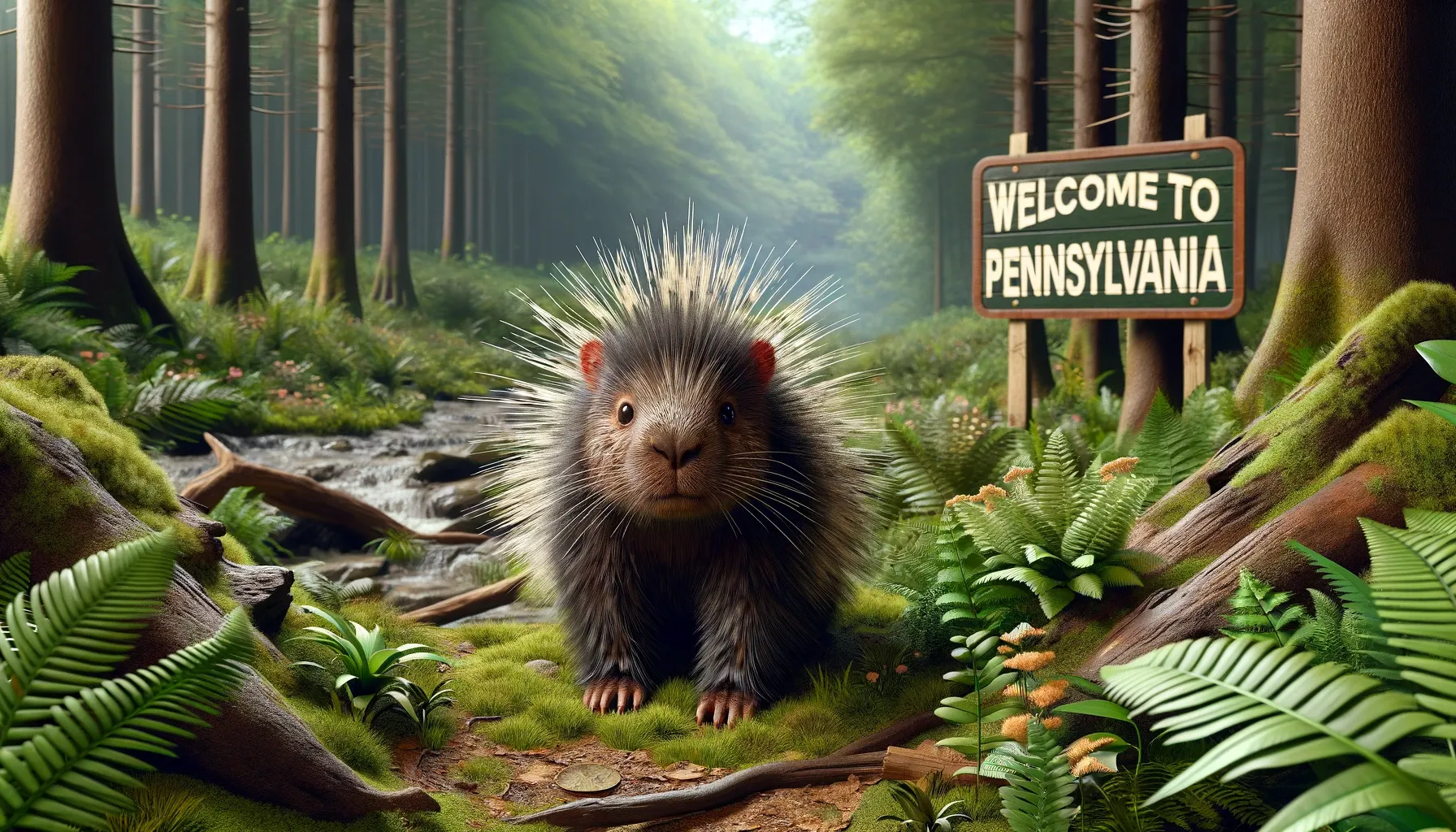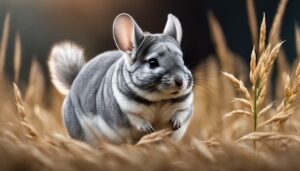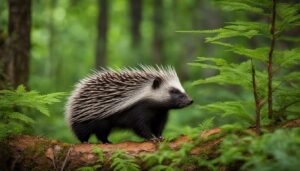Are there porcupines in Pennsylvania? This is a question that has been on the minds of many wildlife enthusiasts in the state.
As I delved into the topic, I discovered some interesting facts about the porcupine population in Pennsylvania and their expanding range.
While there is no official data on the exact number of porcupines in the state, there have been reports of increased sightings and encounters with humans.
It seems that these prickly creatures are making themselves at home in the midstate of Pennsylvania and continue to expand southward.
The Pennsylvania Game Commission is even considering removing the animal’s protection, which could lead to open hunting on porcupines.
This potential change in policy highlights the need for a deeper understanding of porcupines and their presence in Pennsylvania.
Key Takeaways:
- Porcupines are being found all over the midstate of Pennsylvania, as their range continues to expand southward.
- Although there is no official data on their population, there have been reports of increased sightings and encounters with humans.
- The Pennsylvania Game Commission is considering removing the animal’s protection, potentially leading to open hunting on porcupines.
- Understanding porcupine behavior and habitat is essential to coexisting with these creatures.
- Wildlife conservation efforts play a crucial role in balancing human interactions with porcupines and other native species in Pennsylvania.
Porcupine Facts and Behavior
Porcupines are fascinating creatures with unique characteristics and behaviors. Let’s explore some interesting facts about porcupines and understand their behavior.
Porcupines are the second-largest rodent in Pennsylvania after beavers. They have a slow range expansion due to their slow reproductive habits.
Only about half of adult female porcupines become pregnant each year, and they typically give birth to just one pup. This low reproductive rate contributes to their limited population growth.
Porcupines rely on their quills for defense against predators. While they cannot throw their quills as commonly believed, their quills easily come off when touched.
This defense mechanism helps them deter potential threats and survive in the wild.
Porcupines are herbivores with a diverse diet that varies based on the season. They consume twigs, small limbs, grasses, wildflowers, roots, buds, seeds, and even salt found on human objects.
Their ability to adapt their diet allows them to thrive in various environments.
Porcupine Behavior
Porcupines are mainly nocturnal creatures, meaning they are most active during the night. You’re more likely to spot them in the evening or early morning hours.
These slow-moving animals spend their days resting in trees or dens and venture out at night in search of food.
While porcupines are solitary animals, during the winter, they may den together for warmth and protection.
Mating season, which typically occurs in late summer and early fall, is one of the few times when multiple porcupines may come together.
During this time, several males may compete for the attention of a single female.
Understanding porcupine facts and behavior is essential for coexisting with these fascinating creatures.
By respecting their habitat and taking necessary precautions, we can ensure a harmonious relationship with porcupines and protect our environment.
Porcupine Habitat and Distribution in Pennsylvania
When it comes to porcupines in Pennsylvania, they can be found in areas with extensive forests, including both coniferous and deciduous forests.
These creatures are most commonly spotted in the Northwestern and Northeastern regions, as well as in the wooded sections of the ridge-and-valley region.
While there is no specific data on their population distribution, reports of porcupine sightings have been made in various areas of Pennsylvania, such as Swatara Park, SGL 211, and Beech Creek Mountain.
Porcupines, unlike migratory animals, establish their homes in specific territories. Their winter home ranges can vary from 6-12 acres, while during the summer, they may expand their territories to 25-35 acres.
This expansion is due to the availability of food sources and the need to find suitable habitats for reproduction and survival.
Being native to Pennsylvania, porcupines play a unique role in the state’s ecosystem. Their presence contributes to the overall biodiversity and natural balance of the region.
Understanding their habitat preferences and distribution patterns can help us coexist with these fascinating creatures and ensure the preservation of their natural habitats for future generations.
Porcupine Nuisance and Best Practices

Dealing with porcupines can be challenging, especially when they start causing damage to property.
These creatures have a penchant for chewing on exposed wood, which can lead to costly repairs.
Additionally, porcupines may feed on landscaping plants, fruit trees, and garden vegetables, posing a threat to your carefully cultivated yard.
However, there are some best practices you can follow to prevent porcupine nuisance and protect your property.
One effective way to deter porcupines is to remove any artificial food sources that may attract them. This includes securing garbage cans and encasing compost piles to make them inaccessible.
Furthermore, it is essential to protect vulnerable crops and ornamental plants with fences or other barriers.
This physical barrier can help prevent porcupines from reaching and damaging your valuable vegetation.
Another important step in managing porcupine nuisance is to patch any holes in buildings and trim back trees that may provide access to roofs.
By eliminating potential entry points, you can reduce the chances of porcupines taking up residence on your property.
It is crucial to remember that porcupines are nocturnal creatures and are most active during the night, so taking preventive measures during daylight hours can be beneficial.
Protecting Your Garden and Landscaping
If you have a garden or a landscaped area, you can take additional precautions to safeguard your plants from porcupine damage.
Applying a repellent specifically formulated for deterring porcupines can act as a deterrent. These repellents typically contain natural ingredients that emit odors that porcupines find unpleasant, which can effectively deter them from entering your garden.
By removing artificial food sources, protecting your crops with physical barriers, and taking preventative measures to secure your property, you can coexist peacefully with porcupines while minimizing any potential damage.
Conclusion
After exploring the world of porcupines in Pennsylvania, it is clear that these fascinating creatures are indeed present in the state, with their population on the rise.
However, their expansion and increased encounters with humans have led to discussions about their protection status.
The Pennsylvania Game Commission is currently considering removing the animal’s protection, potentially allowing hunting on porcupines.
While this decision may have an impact on the future of porcupines in Pennsylvania, it is crucial to remember the importance of wildlife conservation.
Balancing human interactions with native species like porcupines is essential to maintaining a healthy ecosystem.
By understanding their behavior and habitat, we can coexist with these gentle creatures and take necessary steps to protect both them and our property.
Preventing porcupine nuisance is achievable through simple measures such as securing garbage cans, enclosing compost piles, and using fences or barriers to protect vulnerable crops and ornamental plants.
Patching holes in buildings and trimming back trees that may provide access to roofs can also help minimize encounters with these animals.
Remember, it is best to avoid getting too close to a porcupine to prevent injury and infection from their quills.
As we strive to preserve the natural beauty of Pennsylvania and its wildlife, ongoing conservation efforts play a vital role.
By supporting these initiatives, we can ensure the sustainability of porcupine populations and other native species for generations to come.
Let us embrace the coexistence of humans and porcupines, fostering a harmonious relationship that benefits us all.
Frequently Asked Questions
Q: Are there porcupines in every state?
A: No, porcupines are not found in every state. They are typically present in states with forested areas but are absent from many states, especially those in the southern and central regions of the USA.
Q: What US states have porcupines?
A: Porcupines are mainly found in the western and northern states, including much of the Pacific Northwest, the Rocky Mountains region, and the Northeastern United States.
Q: Do porcupines live in Florida?
A: Porcupines are not native to Florida and do not naturally live there. Florida’s climate and ecosystem are not typical habitats for porcupines.
Q: How many porcupines are in Pennsylvania?
A: The exact number of porcupines in Pennsylvania is not well-documented, but they are commonly found throughout the state, particularly in forested areas.
Q: Are there porcupines in Pittsburgh Pennsylvania?
A: Porcupines are present in Pennsylvania, including areas around Pittsburgh, especially in regions with suitable habitats like forests and wooded areas.
Q: Can you shoot porcupines in Pennsylvania?
A: The regulations regarding hunting or shooting porcupines can vary. It’s essential to check the current state and local wildlife laws and regulations for guidance on this matter.
Q: What should I do if I encounter a porcupine?
A: If you encounter a porcupine, maintain a safe distance. Porcupines are not typically aggressive, but they can use their quills in self-defense if they feel threatened. Give them space and avoid cornering or startling them.




